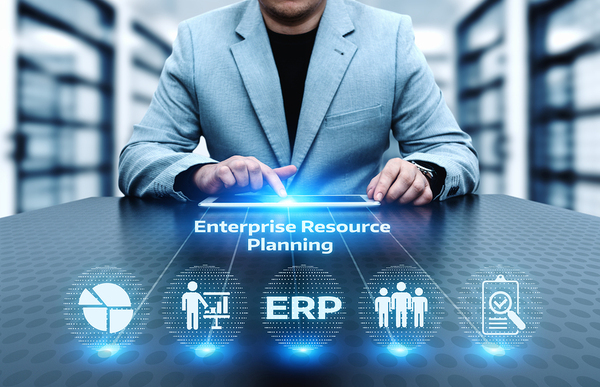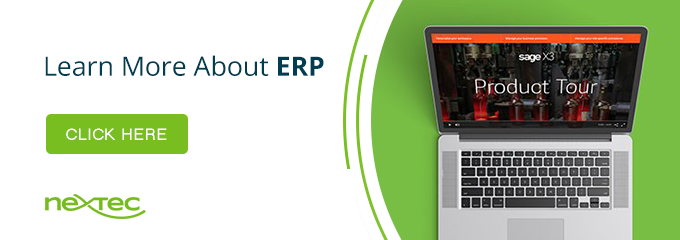
Customization, compliance and cloud are likely to be among the most frequent trends in enterprise resource planning (ERP) technology in 2019.
More businesses will look to change providers for major software systems, including ERP. And businesses looking at adding or changing their ERP solution will want more and will look to ERP providers to deliver more features that improve productivity and leverage disruptive technologies that have become so prevalent in recent years.
Here’s a closer look at the top trends in ERP in 2019.
Continued prominence of the cloud
For several years, cloud migration has been a major focus point for experts looking in the crystal ball to see what enterprise resource planning software trends are likely to dominate. The year 2019 is no exception.
In recent years, businesses have focused on moving software to the cloud in many categories. While the frequency of ERP migrations have lagged behind other systems like HR and CRM, especially for small- and medium-sized businesses, that trend is likely to change. As migration becomes easier and third-party providers offer value-added services in selection and deployment, ERP migration becomes a far more viable option for more companies.
Companies will need to address both the advantages and disadvantages of cloud migrations. On the plus side, a cloud ERP lets companies leverage new features and functionality that’s pushed out regularly. There’s no need to delay upgrading to new versions that require massive resource allocations to manage the migration and change management processes.
However, as the cloud becomes more ubiquitous, companies will need to plan for all those small changes with more training and staff skilled in managing digital ERP projects.
The advances in hybrid cloud ERP solutions provide business leaders with peace of mind for those that need such an approach due to regulatory and security issues. Businesses that need core data and functionality to remain on-premises can count on hybrid solutions that offer the best of both worlds.
Industry-specific solutions on the rise
More companies are seeking ERP solutions that deliver the industry-specific features that are necessary. This trend makes a great deal of sense for companies tired of paying for add-ons, customizations and jury-rigged fixes to get their ERP to do what’s needed.
Take the burgeoning cannabis marketplace, for example, which needs ERP solutions that can track seed varieties, strains and products in a way unique to that industry. In addition, they need powerful compliance and reporting standards that many other agricultural-retail concerns do not.
It’s this customer-centricity that will start to become the norm in 2019 on many levels. ERPs have not always focused squarely on user-friendliness in the past, but that’s changing quickly. At the granular level, this means a focus on more intuitive UX. On a broader level, it means integrating not only with CRM and accounting systems, but also with customer service, e-commerce, social media, finance and analytics.
An Accenture survey of United Kingdom CIOs showed that 41 percent still use a user interface overlay on their ERP to address a lack of personalization.
Companies that were early adopters of cloud-based ERP solutions made the switch often to take advantage of reduced operating and IT costs, ease of use and flexibility. However, when those cloud solutions did not provide all the functionality enterprises expected, there was some buyer’s remorse.
Functionality will take its place of prominence this year. One study of 1,046 ERP reviewers showed that 48 percent of ERP buyers switched systems because the new choices had better features. Seven percent switched due to ease of use and only 4.5 percent switched because of price. The analysts predict that 75 percent of buyers going forward will make a switch because of functionality as will half of those that previously switched because of something other than price or functionality.
Compliance, risk and governance gain prominence
In 2018, the European Union adopted the General Data Protection Regulation (GDPR), which requires companies that do business with European citizens to have strict controls and guidelines for data protection. California passed a similar privacy act later in the year. Key actions in the U.S. Food and Drug Administration’s new Food Safety Modernization Act (FSMA) also became active.
The increasingly complex regulatory space – more regulations issues by more jurisdictions – requires companies to have flexible, scalable solutions that are deeply integrated. That means more companies are investing in governance, risk and compliance (GRC) software. One analyst projects this market to reach $64.6 billion by 2025.
In 2019, ERP vendors are likely to see increasing demands for GRC functionality embedded into their products.
Driving disruption in 2019
Many technologies continue to push the limits of innovation across industries. The Internet of Things, artificial intelligence and deeper analytics will continue to change how ERPs operate. The ERP software structure is poised to act as the backbone upon which other technological advances can be launched.
Artificial intelligence alone is changing the way ERPs operate. As noted in our 2018 look at the year ahead, “artificial intelligence is poised to make major changes to the way ERP systems function (as) these technologies will enable more self-sufficiency in the ERP space and less reliance on human interactions.”
Companies are looking towards the future, too. The Accenture survey showed that 86 of organizations are already extending or want to extend their ERPs with intelligent technologies like machine learning, AI and automation.
Here is a look at some of the ways AI is continuing to change core ERP functionality:
- Enhanced customer service. AI can collate vast databases of previously asked questions, interpret user questions and deliver effective answers in real time. These AI-generated answers can reduce the need for staffed customer service centers and serve as the first line of inquiry for commonly asked questions.
- Chatbots. Much of that enhanced customer service will come via Chatbots, which can facilitate customer interactions, direct customer inquiries, and deliver information to customers and customer service reps alike.
- Dynamic workflows. AI tools can analyze how users access and use systems and data to deliver recommendations for process changes. By sensing how users do their work, remarkable gains in efficiency can be realized.
- Augmented reality. With virtual reality tools and smart devices working with ERPs, field technicians can better diagnose problems and serve customers more effectively. Artificial intelligence helps to predict needed maintenance and repairs earlier, resulting in less down time and operational disruption.
- Analytics. The vast amounts of data being collected and stored in ERPs is a compelling opportunity for businesses. These tools provide real-time insights, displays and reports for business intelligence purposes. But increasingly, companies are also seeing their collected data as a potential commodity to be packaged and sold to customers or third parties.
More mobility
Today’s users expect to have functionality and ease of access to information and tools at all times. On all devices. From anywhere. That means that ERPs will continue to deliver mobile solutions that allow access on smartphones and tablets.
These solutions will need to adapt as ERP complexity increases, but should be an expectation of any ERP customer.
Impact of automation on staffing
Process automation within ERP solutions helps reduce production timeframes, lower costs and reduce error rates. As automation continues to grow, it will help companies lower staffing costs. Robotic process automation (RPA) allows companies to reduce staff devoted to month- and quarter-end reconciliations and accounting tasks, transaction processing, inventory management, employee recruitment and better sales projections.
Eventually, these same advances may reduce the need for software too.
Continued focus on security
With more data stored in the cloud, more users, more connected devices and more threats, the need for robust security will continue to be critical. These issues are not unique to the ERP software space, but will continue to be a focus of concern among buyers and boards.
Making a smart choice
Companies looking to change their ERP or purchase one for the first time need to consider the choice of vendor and product carefully. This process requires careful assessment of needs and capabilities, employee talent, internal climate for change and cost factors.
When evaluating vendors, here are a few core questions to ask:
- Does the vendor’s platform and architecture align with our company’s IT strategy?
- Does the vendor know my industry? Do they stay up to date on technologies and demonstrate a commitment to innovation?
- Are the vendor’s solutions in keeping with our industry’s best practices?
- What level of support does the vendor provide (user groups, partner network, maintenance, phone support, employee education and training)?
- What is the total cost of ownership, including annual fees, implementation fees and support charges?
Choosing the right partner for your ERP selection and implementation is essential in 2019. At NexTec, our consultants have extensive ERP experience and deep knowledge of the vendors, their products and ERP features. We work across industries to help companies of all sizes assess needs, evaluate vendors, select a solution, install it and train and support staff.
NexTec is an industry leader in technology selection and deployment. How do you know when it’s time to replace your ERP system? Find out here.

